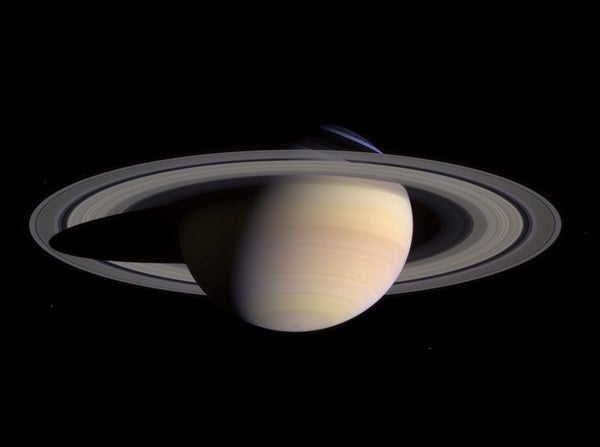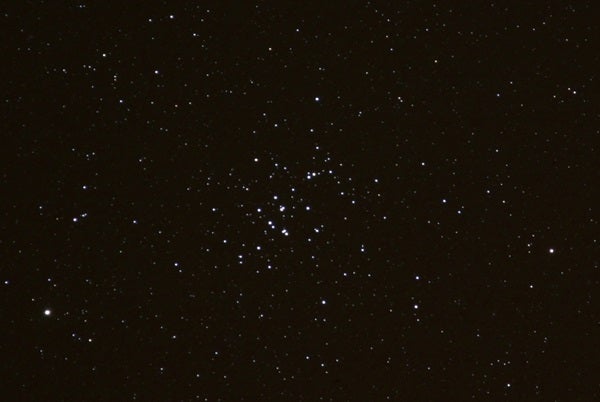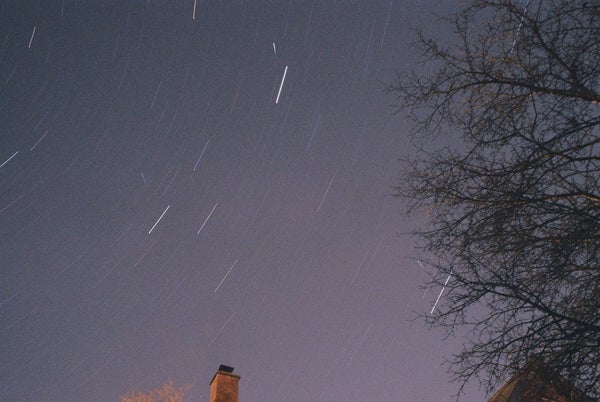Friday, April 14
Although the calendar says it is spring, the so-called Winter Hexagon remains prominent on April evenings. One of the sky’s largest asterisms — a recognizable pattern of stars separate from a constellation’s form — the hexagon stands out in the western sky after darkness falls. To trace this asterism, start with southern Orion’s luminary, Rigel. From there, the hexagon makes a clockwise loop. The second stop is brilliant Sirius in Canis Major. Next, pick up Procyon in the faint constellation Canis Minor, then the twins Castor and Pollux in Gemini, followed by Capella in Auriga, Aldebaran in Taurus, and finally back to Rigel.
Uranus is in conjunction with the Sun at 2 a.m. EDT. From our earthly perspective, this means the distant planet lies behind the Sun and so is out of sight. Uranus will return to view in the morning sky in late May.
Saturday, April 15
After passing between the Sun and Earth only three weeks ago, Venus already appears conspicuous in the predawn sky. It rises some 90 minutes before our star and climbs 10° above the eastern horizon 30 minutes before sunrise. The planet shines so brightly, at magnitude –4.7, that it shows up easily in the brightening twilight. A telescope will deliver spectacular views of the inner world’s 49″-diameter disk, which appears just 13 percent lit.
The Moon reaches apogee, the farthest point in its orbit around Earth, at 6:05 a.m. EDT. It then lies 251,950 miles (405,475 kilometers) from Earth’s center.
Sunday, April 16
For those who like to observe during the quiet predawn hours, Saturn offers a visual treat this week. The ringed planet rises before 1 a.m. local daylight time and climbs some 30° high in the south by the time morning twilight begins. It shines at magnitude 0.3 against the backdrop of northwestern Sagittarius, where it appears nearly stationary relative to the background stars. Take a look at Saturn through binoculars and you’ll also see the open star clusters M21 and M23 as well as the spectacular Lagoon (M8) and Trifid (M20) nebulae less than 4° to its east. When viewed through a telescope, the planet shows a 17″-diameter disk surrounded by a stunning ring system that spans 40″ and tilts 26° to our line of sight. And as a bonus, this morning the waning gibbous Moon appears near Saturn. The two approach each other as morning progresses; the Moon will pass 3° north of the planet at 2 p.m. EDT.
Monday, April 17
Jupiter reached opposition and peak visibility just 10 days ago, and it remains a stunning sight all night. It appears low in the east-southeast during evening twilight and climbs highest in the south around 1 a.m. local daylight time. Shining at magnitude –2.5, the giant planet is the night’s brightest celestial object with the exception of the waning gibbous Moon and Venus, neither of which rises until well past midnight. Jupiter resides among the background stars of Virgo, 8° northwest of that constellation’s brightest star, 1st-magnitude Spica. When viewed through a telescope, the gas giant’s disk spans 44″ and shows incredible detail in its cloud tops.
Tuesday, April 18
One of the spring sky’s finest deep-sky objects, the Beehive star cluster (M44) in the constellation Cancer the Crab, lies high in the southwest after darkness falls. With naked eyes under a dark sky, you should be able to spot this star group as a faint cloud. But the Beehive explodes into dozens of stars through binoculars or a small telescope at low power.
Wednesday, April 19
Last Quarter Moon occurs at 5:57 a.m. EDT. The half-lit orb rises shortly after 2 a.m. local daylight time and climbs highest in the south around 7 a.m. (after sunrise). Earth’s only natural satellite appears against the dim background stars along the border between Sagittarius and Capricornus.
Thursday, April 20
Mars continues to put on a nice show these April evenings. It appears 15° high in the west an hour after sunset and doesn’t dip below the horizon until after 10 p.m. local daylight time. The magnitude 1.6 Red Planet appears among the background stars of Taurus the Bull, just 4° due south of the Pleiades star cluster (M45). Mars and the Pleiades remain within a single binocular field for more than 10 days. Unfortunately, a telescope shows no detail on the planet’s 4″-diameter disk.
Mercury reaches inferior conjunction, passing between the Sun and Earth, at 2 a.m. EDT. The innermost planet will return to view before dawn in mid-May.
Friday, April 21
The Big Dipper’s familiar shape rides high in the northeast on April evenings. The spring sky’s finest binocular double star marks the bend of the Dipper’s handle. Mizar shines at 2nd magnitude, some six times brighter than its 4th-magnitude companion, Alcor. Even though these two are not physically related, they make a fine sight through binoculars. (People with good eyesight often can split the pair without optical aid.) A small telescope reveals Mizar itself as double — and these components do orbit each other.
Saturday, April 22
The annual Lyrid meteor shower reaches its peak before dawn. Conditions this year should be nearly ideal. The waning crescent Moon doesn’t rise until after 4 a.m. local daylight time, and even when it does, it sheds little light into the predawn sky. The shower’s radiant — the point in the constellation Lyra the Harp from which the meteors appear to emanate — climbs nearly overhead just before morning twilight starts to break. Under a clear, dark sky, observers can expect to see 15 to 20 meteors per hour.
Sunday, April 23
The waning crescent Moon appears to the right of Venus before dawn. The two approach each other as the morning progresses, and the Moon will pass 5° south of the planet at 2 p.m. EDT.












